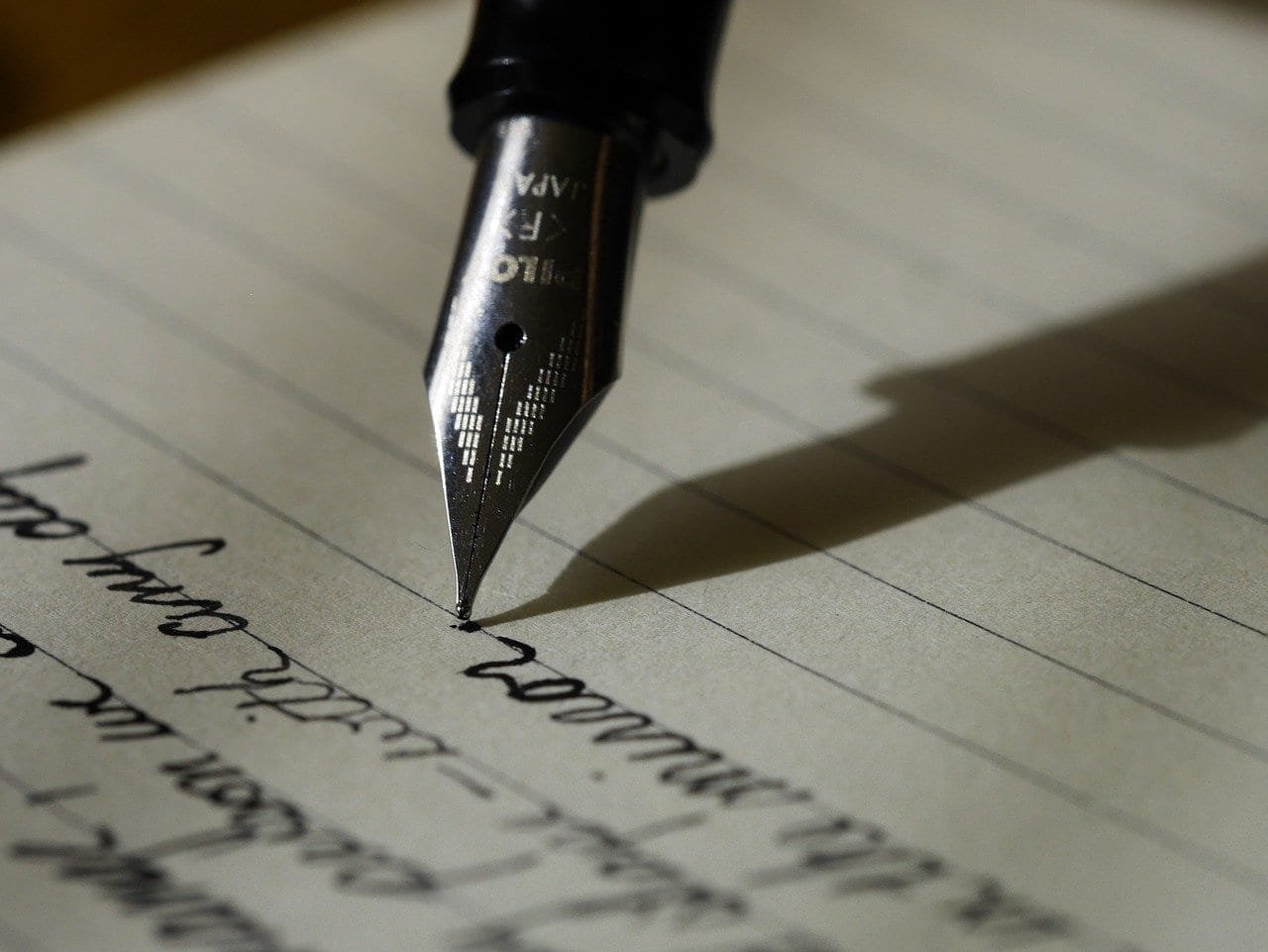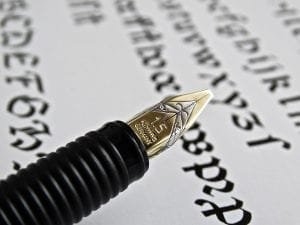
Calligraphy can easily be learned through online workshops and live sessions offered by experienced calligraphers. Some learn this art in order to make a living and others simply find it to be a relaxing experience. Are you a beginner looking to master this art form? Then here are a few tips that will give you a strong foundation-
Before we get down to the nitty-gritty of this art, remember that you need oodles of patience and practice to master it. Calligraphers who now create whimsical wedding cards and more in sophisticated letter forms took several months or even years to get there. Equipping yourself with the will to learn and the willingness to practice with dedication., here are a few things to remember-
1. Find your direction!
There can be a huge difference between traditional calligraphy styles and modern calligraphy techniques. For creating elegant looking Copperplate letters or the rustic Gothic fonts, it is traditional calligraphy that you should focus on. Do you want something more freestyle? Are you hesitant to work with broad nib fountain pens? Then modern calligraphic styles or brush lettering might suit you. Obtaining this clarity and knowing the core difference between calligraphy and hand-lettering is critical if you are serious about this art.
2. Choose the right pen
A traditional fountain pen is a great tool, to begin with. If you are only attempting faux calligraphic fonts you can even attain success with just a pencil. However, if you are determined to learn calligraphy and write like a pro, you should invest in a good set of calligraphy pens. There are some beginner-friendly fountain pens that come with refillable ink wells. Some pens have replaceable ink cartridges.
The other popular option is a dip pen. There is a vintage charm that dip pens carry. Then comes the demarcation based on the positioning of the nibs. Oblique pens are very popular for a few fonts like Copperplate. Unlike traditional pens, the nibs for calligraphic practices come with a broad edge and this helps create different thicknesses of strokes in each letter. The authenticity of fonts like Blackletter would be tough to replicate without a broad nib. So, choosing the right pen to be able to get your strokes right.

3. The other tools to get you ready
Different inks are used for dip pens and fountain pens. The right kind of ink can give you that fluid writing experience and the consistency in your strokes. There are waterproof inks with durable finishes for professional projects. If you want a mess-free writing experience, you can also pick beginner-friendly calligraphy markers. These are similar to the conventional pigmented markers. But they feature a broad tip or chisel tip. With this you can create the broad strokes and narrow strokes easily.
The paper you use can have a significant impact. A good ink combined with a great pen can deliver the expected results when you choose the right kind of paper. A smooth paper would not damage your nib and it would also allow the pen to glide smoothly. Textured papers might be difficult to work when you are a beginner. GSM rating is one way to compare different papers. Lower GSM rating of the paper might mean that your ink might bleed or blot and the letters might not have precise edges.
4. Do not underestimate your guidelines
Irrespective of the script you choose, working with the guidelines is critical. From the slant of the letter to the height and spacing of the letters, every little attribute alters the overall appearance. And all these attributes can be accurately drafted only when your guidelines are accurate. Depending on the script you practice, the x-height would be calculated in terms of the nib width heights. Getting this right can influence the shape of your letters. You can easily find printable sheets with guidelines for the particular script you are practicing. If you buy a light box you would be able to reuse the same guideline sheet for all your practice papers. It makes a wonderful investment for those who decide to learn calligraphy as a hobby.
5. Start with one script
Uncial, Copperplate, Italic fonts, Textura Quadrata, and a host of other scripts are popular. Worksheets, tutorials, and video instructions for all these are easy to come by. There are also fun bubble fonts if you like to get playful with your styles. Focusing on one script lets you master the art right from the basics. This will also be a more rewarding experience. Pick one font and spend a few days or weeks practicing only that font. Attempt learning both minuscule and majuscule fonts in the script. You can then hop on to another once you feel a sense of accomplishment with the first one.
6. Train your muscle memory
To learn calligraphy the right way, you should spend enough time working with the basic strokes. Each script has a different set of basic strokes. Once you have mastered them all, it is all about combining them to form the different letters. Writing these basic strokes over and over can train your muscle memory. It is all about enhancing the confidence in your strokes. Shaky strokes lead to odd-looking fonts. To make sure that this doesn’t happen, you should be able to find your hand automatically alter the stroke thickness in different places. Unlike cursive writing, you would be lifting your nib several times while writing each letter, depending on the number of basic strokes involved. Your seating posture and the way you hold your pen are also factors that influence how quickly and correctly you train your muscle memory.
7. Do not skip practice
Regular practice is very important if you want to learn calligraphy. Writing even for a few minutes every day can have a huge impact on your letters. You would be able to easily learn all your favorite styles with consistent practice. Begin with tracing on printouts and then use them and practice on a tracing paper. You can then practice in your notebook using guidelines. Once you have learned all the alphabets in that script, start with small sentences. Try writing your favorite quotes and then expand the size of the content you write in that script.
8. Collect books and educational resources
Gathering educational resources, e-books and textbooks to learn calligraphy. These often cover a little about the historical journey of this art form. It can be a great way to boost your love for this art. When you start appreciating the history behind the art and learn about the origin of the different scripts, learning them all feels more enjoyable. It will keep you motivated to perfect this art and also admire the nuances of it. You might end up stumbling upon rare tips and tricks that can help you improve your writing.
9. Do not be afraid when it comes to flourishes
Flourishing is one of the most interesting aspects of calligraphic techniques. These are the curvy designs you find attached to the corners of various alphabets. Adding flourishes can make your letters look more beautiful. From the length of flourishes, you use to the position you can mix and match different styles to customize your fonts. These let you add a dramatic makeover to your letters and alter the way you connect each alphabet. This is where you can display your individuality in calligraphy styles. Copperplate is one script that looks mystical when you add a few flourishes. Once you learn a font, you can then work on playing around with different flourishing techniques for that.
10. Enjoy what you do
Though you can make a lucrative profession upon learning calligraphy, it is an art form in the end. So, do not muffle your creativity while learning this art. Keep practicing and enjoy every little stroke you make. Remember that all those video tutorials you find on the internet are sped up versions of the original lettering speed. Real-time lettering speeds are often slow, even with the most experienced calligraphers. It is this soothing speed that makes writing these decorative fonts such a pleasurable experience. When you start writing, make sure that your whole body is relaxed. This can make your letters look crisp and pretty from start to end. Only when you are relaxed physically and mentally would you be able to let your creative juices flow in order to create the best combination of flourishing and other ornamentation techniques.
Once you have started enjoying calligraphy as an art, you can easily add more sophistication to your letters by playing with the colors of your ink. You can also combine different letter forms to create a funky text for posters and other decor pieces. Some people use watercolor techniques to beautify their letters. There are endless ways to make your art piece look exactly how you picture it. Start slow, keep practicing, and enjoy your work and you are sure to master this art of beautiful writing within a short period.